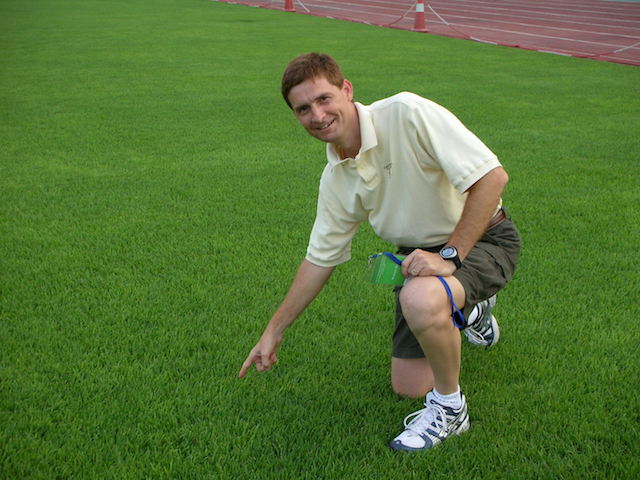Q: A stay-at-home order due to the COVID-19 pandemic is preventing me from maintaining our school’s athletic fields. I’m an employee of the school system and was sent home. With very little advance notice, I was not able to get my bermudagrass fields ready for “no maintenance.” With no idea of when I can return, I do not know what to expect when I do return. What are your thoughts on how these fields will look without any maintenance for months?
A: In terms of field care, unlike damage from high winds and excessive water, this pandemic resulted in a rapid shutdown with no allowance for a timely return to work. I know the situation is a bit different for everyone. Even within the same county or school district, the ability to work on a field may be different.
For example, our state’s pandemic response differentially influenced how different groups can do the same job. If fields were under a maintenance contract from an outside vendor, then the vendor could continue maintaining fields as an essential service unless the property owners restricted access. At the same time, I do not know of any secondary schools that would allow school employees to come onto school property to maintain fields. In a hybrid example, our university research facility had to file an exception request to allow one designated employee onsite to minimally maintain our turfgrass – infrequent mowing, disease prevention, irrigation checks – for two half-days a week. That is about five percent of the man-hours we normally have working in midsummer.
As for your question, you do not know how long it will be until you can return and begin the most basic maintenance tasks. Obviously the longer the fields are abandoned, the higher the chance they will be in poor shape when you return. The good news is that you probably already have your pre-emergence weed control in place. At your location, you probably have also applied the first spring fertilizer application. Both these will be to your advantage. But without mowing, the bermudagrass is going to continue growing vertically and laterally. So the field is going to take on the look of a pasture, and your baseball and softball fields will see increased encroachment into the clay skinned areas.
In years past, I have worked with several schools that have abandoned fields over the summer due to budgetary reasons. Most bermudagrass fields that are abandoned for a few months during the growing season can be returned back to at least moderate condition in a few weeks due to the toughness and resiliency of the grass. Start by scalping the turfgrass to a reasonable height with a rotary mower. With warm temperatures, bermudagrass responds very quickly to fertilizer and water. The bermudagrass is also very tolerant to a wide range of pesticides, allowing a manager to aggressively control most weeds without fear of killing the bermudagrass. Edging and dragging clay can be effective at removing the runners, and a non-selective herbicide can be useful if the encroachment has been widespread.
The better the shape of the field when you left it, the better shape it is likely to be in when you return. If adequate time or resources are not available for necessary renovation before use, some may decide to scalp down the canopy and overseed the bermudagrass with ryegrass. That can get one through fall and/or spring use until more extensive renovations are made in 2021.
The leadership at the national STMA organization and state chapters have been publishing written information and hosting webinars to help sports field managers deal with the many situations and stresses this pandemic has caused. Be sure to visit www.stma.org and your state’s chapter resources for more recovery information.
Grady Miller, Ph.D. is professor and extension turf specialist at North Carolina State University.
Questions?
Send them to Grady Miller at North Carolina State University, Box 7620, Raleigh, NC 27695-7620, or e-mail grady_miller@ncsu.edu
Or, send your question to Pamela Sherratt at 202 Kottman Hall, 2001 Coffey Road, Columbus, OH 43210 or sherratt.1@osu.edu


